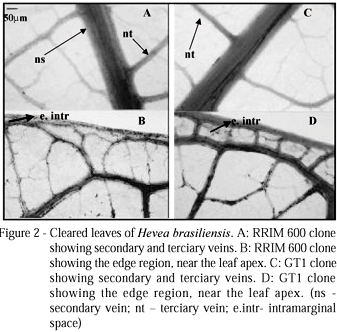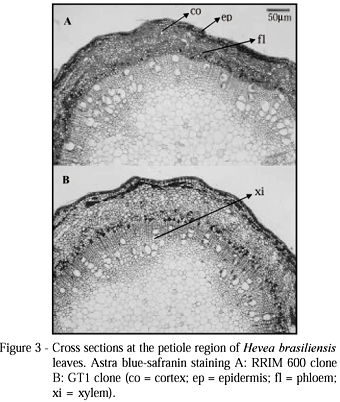Rubber trees are easily recognizable for being woody, medium to large-sized plants, having a typical deciduous behavior, and especially because they produce latex. The purpose of this work was to study the anatomy and morphology of the leaf, comparing rubber tree &91;Hevea brasiliensis (Willd. ex Adr. de Juss.) Muell.-Arg.&93; clones (RRIM 600 and GT 1) grafted on the same root stock (Tjir 1), grown under the same climatic and soil conditions. This study allowed clones to be differentiated and also provided information on the location and disposition of laticifers in the leaf tissue. Cross sections of the mesophyll, center ribbing and petiole regions were made, followed by usual permanent histological blade methods. Biometric analyses of tissue extensions in the palisade and spongy parenchymas were carried out, and the number of cells in the spongy parenchyma were counted. At the same time, biometrical analyses were made for stomata. The comparison between the clones showed that there were no significant differences in epidermal cell height, spongy parenchyma height, number of cells in the spongy parenchyma layer, and size and width of leaflets. However, variation was observed for cell thickness in the palisade parenchyma. The clone GT1 presented greater thickness as compared to the RRIM 600 clone. GT1 had also a greater number of stomata in comparison to RRIM 600, but they were smaller. GT1 presented greater petiole and center ribbing diameters in the leaves and a greater amount of sclerenchyma fibers than RRIM 600.
Hevea brasiliensis; leaf; clones






